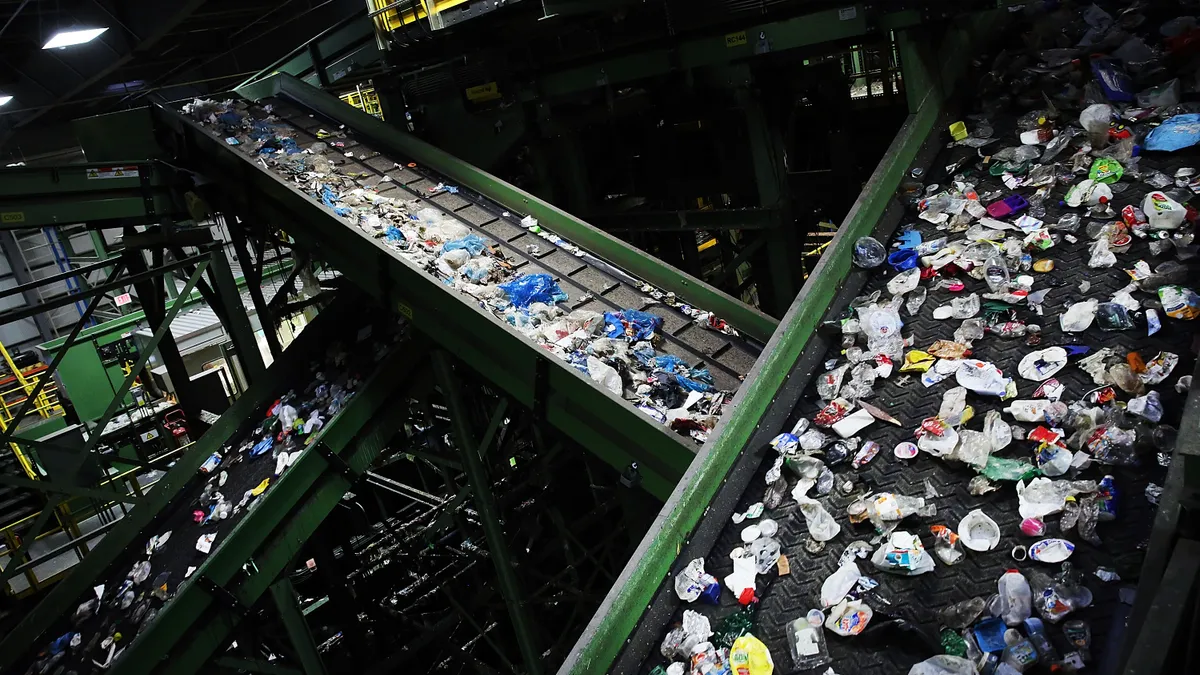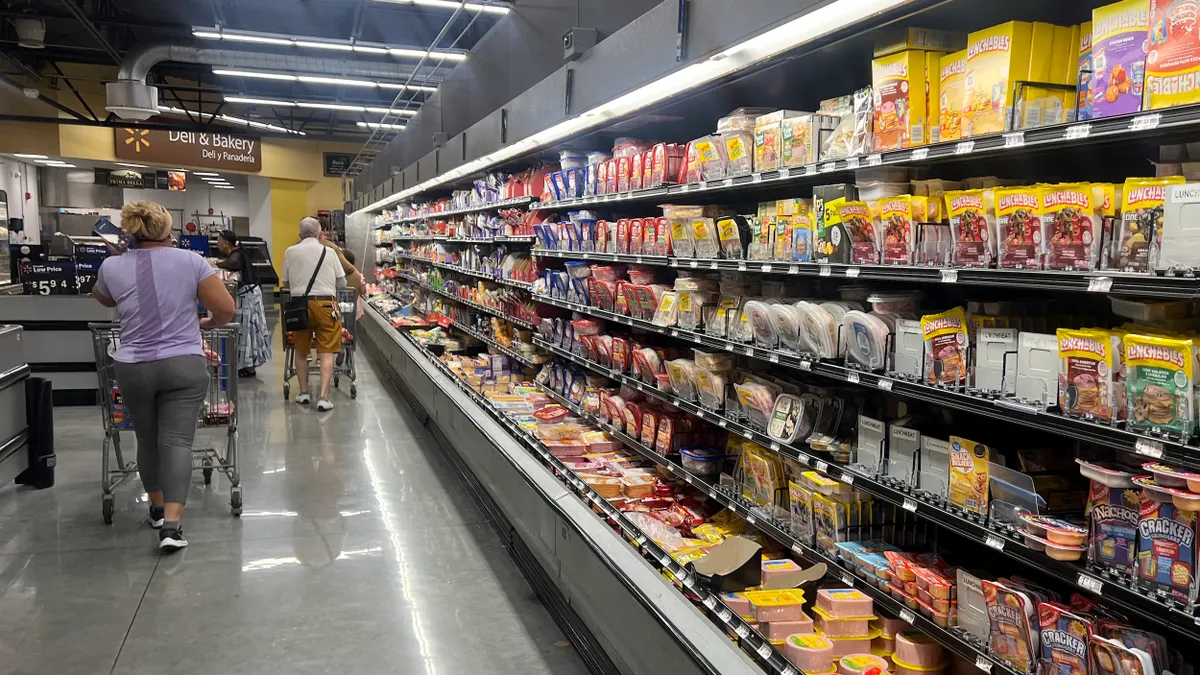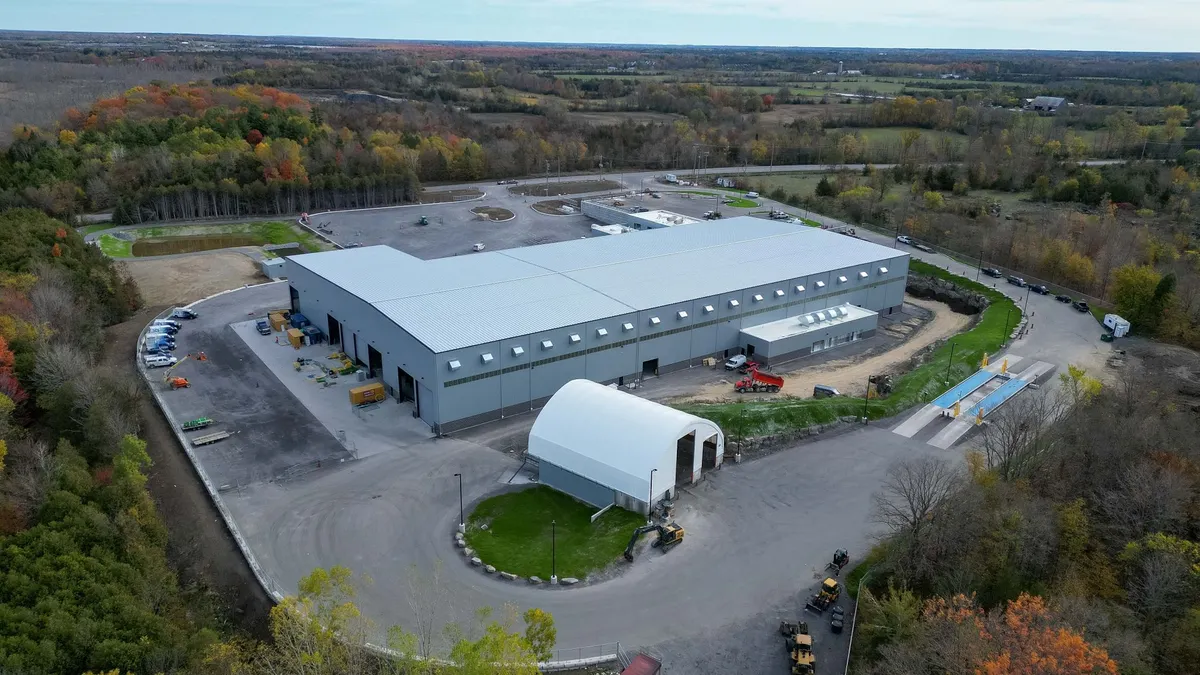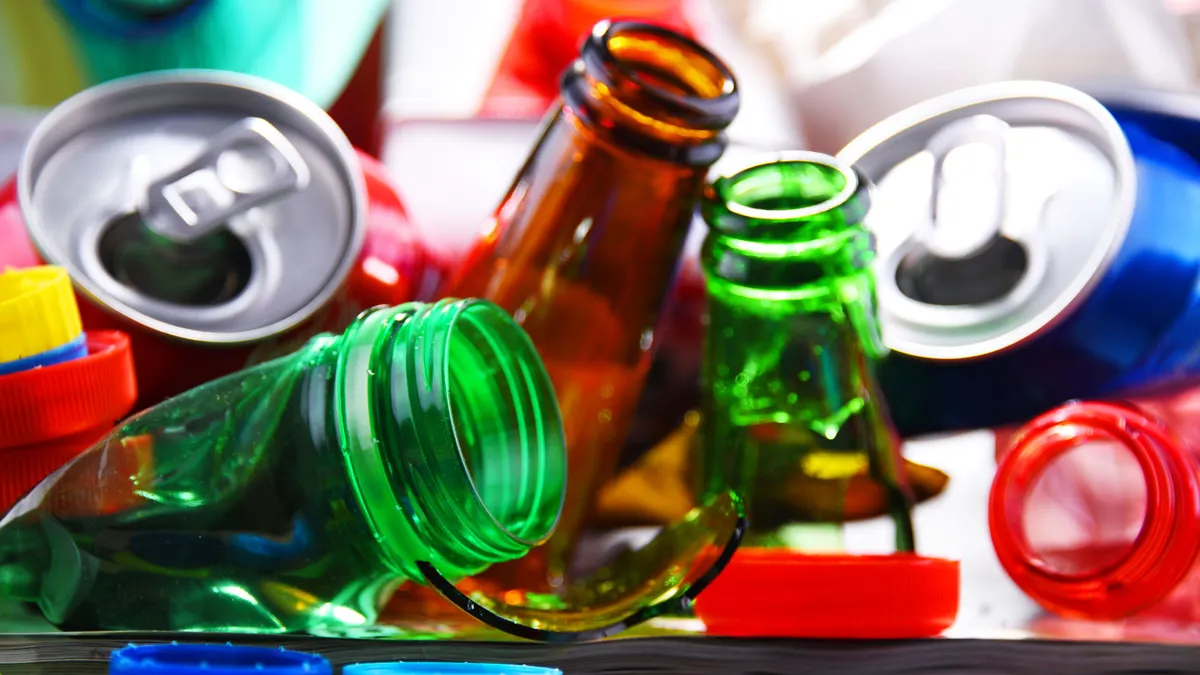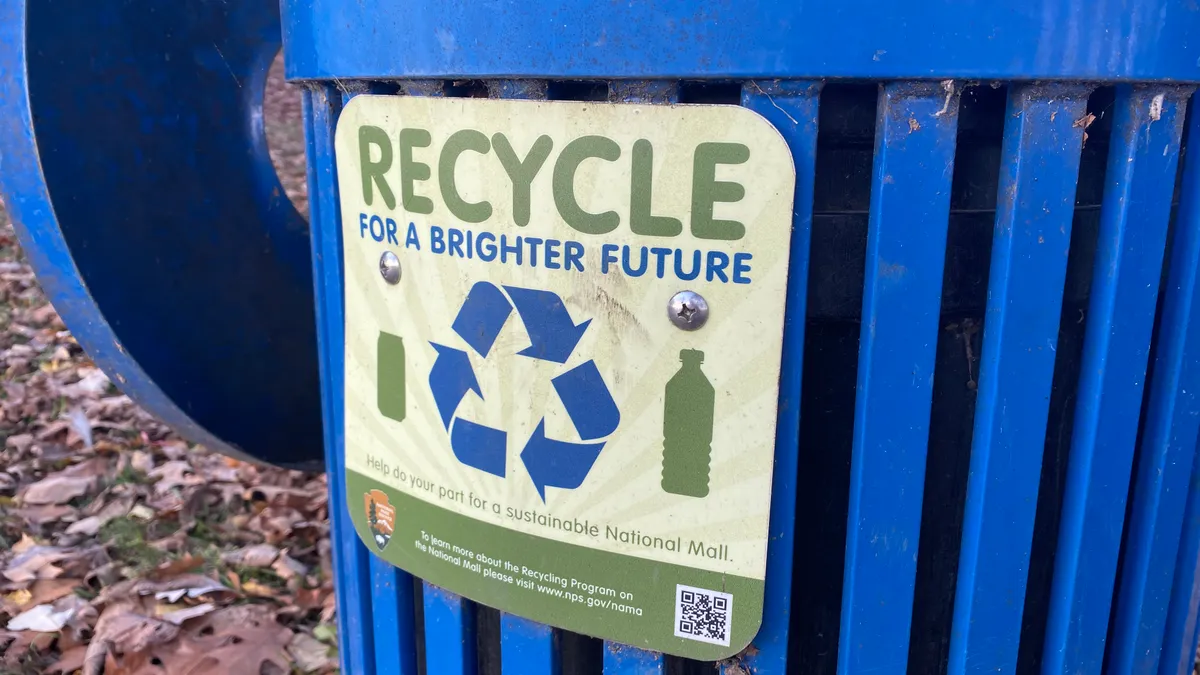Recycling is complex and requires collaboration among multiple sectors, according to a study by ASTRX.
Applying Systems Thinking to Recycling is a joint project of the Sustainable Packaging Coalition (SPC) and The Recycling Partnership.
"Recycling isn't a thing, it's a system — and the different parts of the system don’t communicate enough," Dylan de Thomas, VP of Industry Collaboration for The Recycling Partnership, told Waste Dive.
The report notes that different players tend to exclusively see their portion of the supply chain, rather than the system as a whole — a trend that led the ASTRX team to embark on a research study aimed at increasing transparency and improving recycling systems' operating effectiveness.
"The entire recycling industry is shrouded in secrecy. Transparency is better for the entire industry, but how difficult is that based on the current state of relationships?" commented an anonymous processor quoted in the report.
The study sought to determine whether certain packaging types, materials or contamination cause significant challenges for MRFs and processors. It also aimed to find where in the system those elements exist, and why they cause problems.
Last summer and fall, the researchers interviewed 11 MRFs and 10 processors who handle five commodities —paper, glass, plastic, aluminum and steel — on how well each material moves through their facilities.
One of their key takeaways is that while successful material flow falls on MRFs and processors, brand owners are also an integral part of the recycling chain. Their participation in the system via better product design can make or break that chain.
The report lists a total of 14 findings across all materials, offering 12 recommended interventions to improve recycling systems. These include developing design guides for paper and aluminum, avoiding packaging that contains more than one material type, improving collection systems, using careful public messaging and helping MRFs invest in infrastructure improvements.
ASTRX also identified a number of materials that can be recycled under the right circumstances, but which are causing widespread problems under current conditions.
"The report highlights the challenges caused by some types of packaging that you might not know about, like shrink sleeves on aluminum cans or metal lids on plastic bottles," Trina Matta, senior manager at SPC, told Waste Dive.
While recycling is a regional activity and local markets dictate product recyclability, some items consistently cause issues for MRFs and processors across the country. In addition to shrink sleeves and mixed-material packaging, problems frequently arise from shredded paper as well as films and flexible packaging. ASTRX considers these "critical areas" for system-wide interventions.
While the transition to these products might be imperceptible to the average consumer, their popularity is growing as the packaging stream evolves. Craft beer brewers, for example, have caused a surge in shrink sleeves on aluminum cans — an option that is more cost-effective than printing directly on cans. Some can stamping operations won't accept craft brewers' business if the order is too small, so the brewers turn to easily obtained shrink labels instead.
Study participants voiced concerns about a move away from "core" packaging materials — PET, HDPE, cardboard, aluminum and steel — toward more complex "fringe" packaging. But the packaging market is continuously evolving, and the report asserts eliminating materials troublesome to the current stream prevents MRFs from adapting to emerging streams.
Equipment upgrades and research will become more important in the coming years, in light of the societal shift toward lighter-weight packaging. The report notes that interviewed MRFs lack advanced equipment, such as ballistic separators, to prevent sorting line disruptions such as film wrapping around equipment. The ASTRX team recommends "more research on infrastructure to support the recovery of flexible films and packaging," Matta said.
While the report recognizes that industry players have different goals, it encourages them to find ways to work together. MRFs, for example, are more focused on speed and material quantity, whereas processors prioritize bale quality. Examining the report's findings and addressing recommendations could promote greater synergy among all participants — including packaging manufacturers and users.
"We wanted to bring some clarity between the producers of increasingly complex packaging to the parts of the circular economy that sorts and transforms the stuff we put in recycling carts into something new," de Thomas said. "I hope that this critical dialogue continues and we hope to be a part of it with our ASTRX partners at the SPC."


